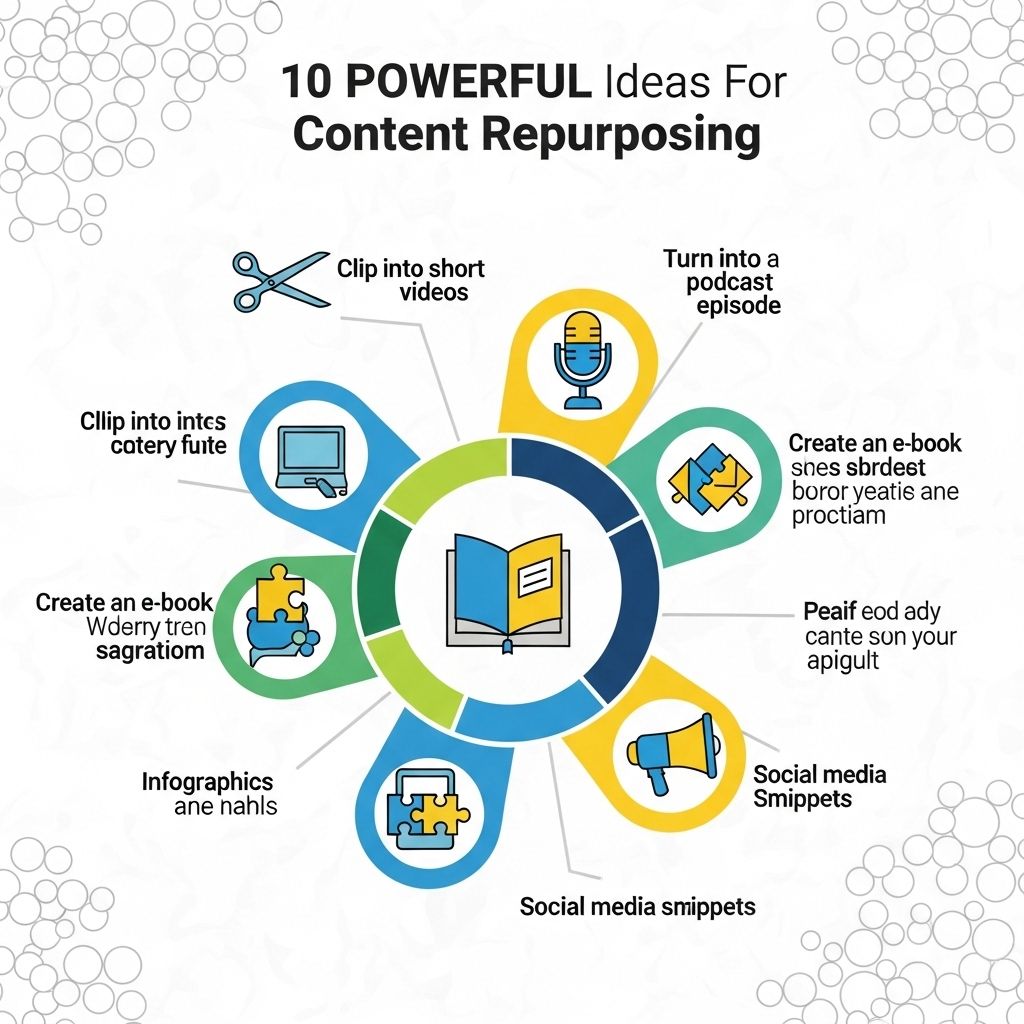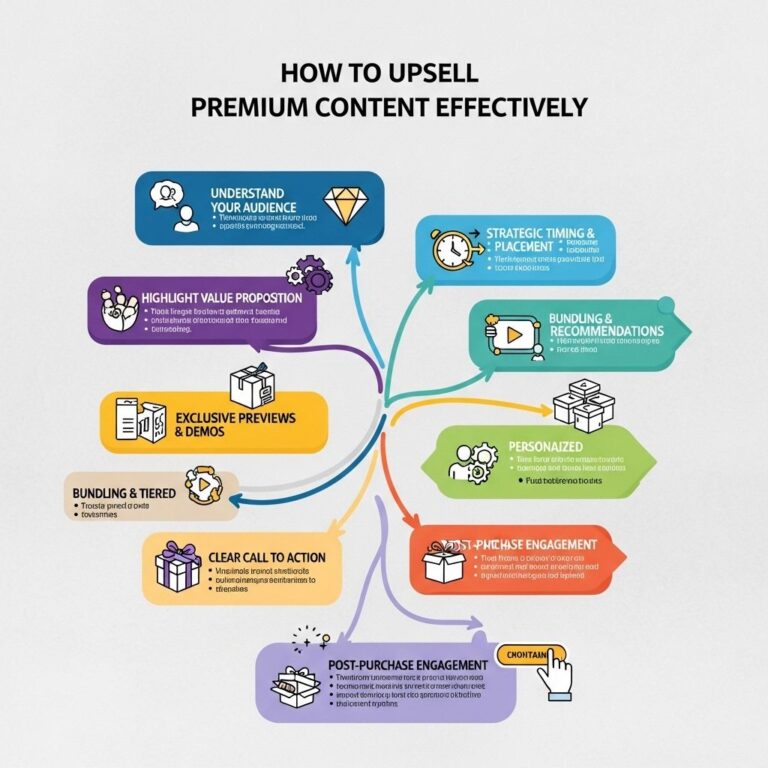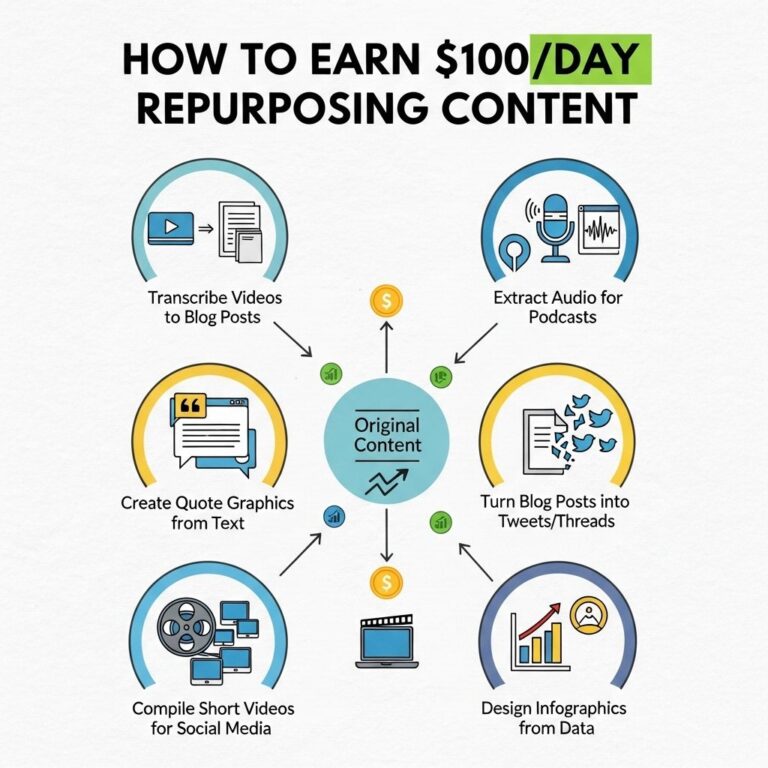In the digital age, the volume of content produced on a daily basis is staggering. From blog posts and articles to podcasts and videos, content creators are continually racing against the clock to stay relevant. However, not every piece of content needs to be created from scratch. Content repurposing is a smart strategy that can save time and enhance your online presence. By transforming existing content into different formats, you can reach new audiences and maximize your content’s lifespan. Here are ten powerful ideas for content repurposing that can help you make the most of your creative endeavors.
Table of Contents
1. Transform Blog Posts into Infographics
Visual content tends to perform better than text-only formats on social media and other platforms. One effective way to repurpose a blog post is to convert it into an infographic.
Benefits of Infographics
- Visual appeal captures attention.
- Infographics can simplify complex information.
- They are more likely to be shared on social media.
Steps to Create an Infographic
- Identify your blog post’s key points.
- Use design tools like Canva or Adobe Illustrator.
- Include visuals, charts, and concise text.
- Share on platforms such as Pinterest and Instagram.
2. Turn Webinars into Blog Posts
Webinars are a valuable source of information, but they can often be long and dense. By summarizing the key takeaways from a webinar, you can create engaging blog posts.
How to Create Blog Posts from Webinars
- Watch the webinar recording and take notes.
- Outline the main topics discussed.
- Include quotes and key insights from the speakers.
- Add visuals or slides from the presentation.
3. Convert Podcasts into Video Content
Podcasts are gaining popularity, and many listeners enjoy consuming content on visual platforms. Transforming podcast episodes into video format can attract a different audience.
Methods to Create Video Content
- Record video footage while recording the podcast.
- Create a slideshow with audio from the podcast.
- Use animation tools to illustrate key points.
4. Compile Social Media Posts into eBooks
If you’ve been actively sharing valuable insights on social media, why not compile them into an eBook? This format allows you to create a comprehensive guide on a specific topic.
Steps to Create an eBook from Social Media
- Gather your top-performing social media posts.
- Organize them by theme or topic.
- Write a compelling introduction and conclusion.
- Design the eBook with a professional layout.
5. Use Video Clips for Short-Form Content
Video clips can be repurposed into short-form content such as TikToks or Instagram Reels. These platforms thrive on bite-sized content that engages viewers quickly.
Tips for Creating Short-Form Content
- Edit highlights from longer videos.
- Incorporate trending sounds or challenges.
- Add captions for better engagement.
6. Develop Slide Decks for Presentations
Take key information from your articles or blog posts and convert them into slide decks. These can be used for presentations, sharing on SlideShare, or even as downloadable resources on your website.
Creating Effective Slide Decks
- Keep slides visually appealing and uncluttered.
- Use bullet points to highlight important information.
- Include images or graphics to enhance understanding.
7. Create a Quiz Based on Your Content
If your content includes educational material, consider creating a quiz. Quizzes can increase engagement and provide a fun way for users to test their knowledge.
Steps to Develop a Quiz
- Identify the key topics from your content.
- Draft questions that test understanding.
- Use platforms like Typeform or Quizlet to create the quiz.
8. Repurpose Case Studies into Success Stories
Case studies are often rich in information and detail. By repurposing them into success stories, you can create relatable content that showcases results and engages your audience.
How to Write Success Stories
- Summarize the challenges faced by your client.
- Highlight the solutions you provided.
- Include measurable results and testimonials.
9. Create a Newsletter from Your Content
Newsletters allow you to engage with your audience consistently. By curating your best content and sharing it in a newsletter, you can keep your audience informed and engaged.
Components of a Great Newsletter
- Engaging subject lines to boost open rates.
- A mix of new content and evergreen articles.
- Clear call-to-action buttons.
10. Develop FAQs from Your Content
Analyze your content for common questions asked by your audience. Creating a FAQ section can be an excellent way to repurpose content while addressing your audience’s concerns.
How to Create an Effective FAQ
- Identify key questions related to your content.
- Provide clear and concise answers.
- Organize questions by category for easy navigation.
In conclusion, content repurposing is a strategic approach that can significantly enhance your content marketing efforts. By taking advantage of the various formats available, you can reach different audiences, prolong the lifespan of your content, and save time in the content creation process. Implementing these ten ideas can help you maximize your existing content, ensuring that your hard work continues to pay off.
FAQ
What is content repurposing?
Content repurposing is the process of taking existing content and adapting it for different formats or platforms to reach a wider audience.
Why should I repurpose content?
Repurposing content helps maximize your content’s value, improves SEO, and allows you to engage with different audience segments on various platforms.
What are some examples of content repurposing?
Examples include turning a blog post into a video, creating infographics from research data, or converting a webinar into a podcast episode.
How can I repurpose blog posts effectively?
You can repurpose blog posts into slideshows, social media posts, or eBooks, making sure to highlight key points and insights.
What tools can help with content repurposing?
Tools like Canva for graphics, Lumen5 for video creation, and Anchor for podcasting can help streamline the repurposing process.
How often should I repurpose content?
You can repurpose content as often as needed, but it’s beneficial to revisit high-performing content every few months to refresh and adapt it.









